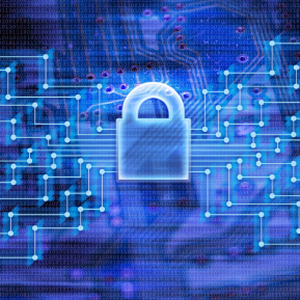Other Research Areas
|
Physical Layer Security for Distributed Enciphering

Physical layer security has recently gained attention as an alternative approach to control information access beyond traditional cryptographic mechanisms. Essentially, the approach which is typically keyless, exploits the interference within the communication system that occurs at the physical layer. This is done through the use of coding whereby the codes attempt to maximize the capacity between a legitimate sender and receiver in the communication system while minimizing the capacity between a legitimate sender and eavesdropper. They keyless property makes this approach to security attractive for applications such as distributed computing and sensor networks. Typically such nodes are autonomous and deployed in hostile environments such that node capture can reveal critical keying information used in traditional cryptography to jeopardize network security.
Our research focuses on problems related to secret sharing, distributed enciphering and distributed source coding for confidentiality and compression at the physical layer. Our algorithms are inspired with sensor networks in mind.
The basic setup through-out the research assumes that a set of sensor nodes encipher their data without collaboration and without any prior shared secret materials. The challenge is dealt by an eavesdropper who intercepts a subset of the enciphered data and wishes to gain knowledge of the uncoded data. We study this problem using information theoretic models to gain insight and an intuitive understanding of the characteristics of this system problem. There are four main parts to this body of work:
- The first part deals with noiseless channels whereby the goal is for sensor nodes to simultaneously source code and encipher their data. Inner and outer regions of the associated capacity region (i.e the set of all source coding and equivocation rates) for this problem under general distortion constraints are derived. The main conclusion is that unconditional secrecy is unachievable unless the distortion is maximal, rendering the data useless.
- The second component provides a practical coding scheme based on distributed source coding using syndromes (DISCUS) that provides secrecy beyond the equivocation measure, i.e. secrecy on each symbol in the message.
- The third part involves discrete memoryless channels such that the goal is for sensor nodes to both channel code and encipher their data. Inner and outer regions to the secrecy capacity region, i.e. the set of all channel coding rates that achieve (weak) unconditional secrecy are derived. The main conclusionis that interference allows (weak) unconditional secrecy to be achieved in contrast to the noiseless case in the first part of this work.
- The fourth part addresses wireless channels with fading and additive Gaussian noise. A general outer region and an inner region based on an equal SNR assumption is derived and it is shown that the two are partially tight when the maximum available user powers are admissible.
Related Publications
"Distributed Secret Sharing over the Gaussian Interference Wiretap Channel,” in Securing Wireless Communications at the Physical Layer Book Chapter R. Liu; W. Trappe (Ed.): pp. 39-64, Springer, 2010, ISBN: 978-1-4419-1384-5. |
On Privacy and Security in Distributed Visual Sensor Networks Inproceedings Proc. IEEE International Conference on Image Processing (ICIP), pp. 1692-1695, 2008. |
Distributed Secret Sharing for Discrete Memoryless Networks Journal Article IEEE Transactions on Information Forensics and Security, 3 (3), pp. 424-430, 2008. |
Distributed Secrecy for Information Theoretic Sensor Network Models PhD Thesis Texas A&M University, 2008. |
Secure Distributed Source Coding with Side-Information Journal Article IEEE Communication Letters, 12 (4), pp. 310-312, 2008. |
Separate Enciphering of Correlated Messages for Confidentiality in Distributed Networks Inproceedings Proc. IEEE Global Communications Conference (GLOBECOM), pp. 1637-1641, Washington, DC, 2007. |
Distributed Keyless Secret Sharing over Noiseless Channels Inproceedings Proc. IEEE Global Communications Conference (GLOBECOM), pp. 44-48, Washington, DC, 2007. |
Distributed Keyless Security for Correlated Data with Applications in Visual Sensor Networks Inproceedings Proc. ACM Multimedia and Security (MMSec) Workshop, pp. 75-86, Dallas, Texas, 2007. |
Distributed Privacy for Visual Sensor Networks via Markov Shares Inproceedings Proc. 2nd IEEE Workshop on Dependability and Security in Sensor Networks and Systems (DSSNS), pp. 23-34, Columbia, Maryland, 2006. |